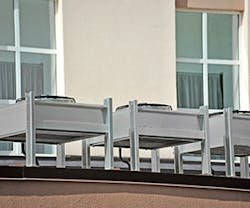CO2 Use in Commercial Refrigeration Breaks Into Mainstream
A recently conducted online survey shows that CO2 use in commercial refrigeration systems are no longer outside the mainstream. Danfoss, an electronic and mechanical air conditioning and heating manufacturer conducted the survey to determine the acceptance of carbon dioxide (CO2) refrigeration systems in the U.S.
The results of the survey show the commercial refrigeration industry continues to see CO2 as a viable mainstream technology for refrigeration (82% of OEMs; 91% of consultants and end-users), and about half of OEMs responding see CO2 refrigeration as being at least 16% of their business within the next five years.
This shows a much different outlook than in 2012, when a similar survey showed that less than 20% of OEMs saw CO2 comprising at least 16% of their business. The survey was distributed via e-mail to approximately 1,100 people who do business in commercial or industrial refrigeration applications.
“The results of this survey validate the ongoing growth we are seeing in CO2 projects across North America,” says Peter Dee, Sales and Services Director of Food Retail at Danfoss.
The survey combined total input from commercial and industrial refrigeration original equipment manufacturers (OEMs, consultants, contractors, and end users.
Most facility managers and end-users engaged in CO2 projects, claiming that pending legislation/regulations and corporate sustainability goals as key drivers in the decision to use CO2. However, at the same time, they identified the high initial system cost as a primary barrier to deployment.
The survey also identified similar acceptance in the industrial refrigeration market. A full 57% of responding OEMs and contractors and 43% of consultants and end-users indicated they have already either been involved in a CO2 refrigeration project or have plans to be. However, OEMs and contractors do not see CO2 becoming a significant part of their business in the near future.
OEMs and contractors identified the removal of ammonia, in terms of improved safety and reduced ammonia charge, as key drivers in using CO2. Consultants and end-users agreed, but also cited pending legislation/regulation as important factors. In contrast to the commercial refrigeration industry, industrial refrigeration respondents said the primary barrier to further CO2 use is the result of end-user and contractor familiarity and training.
